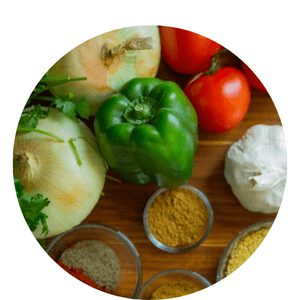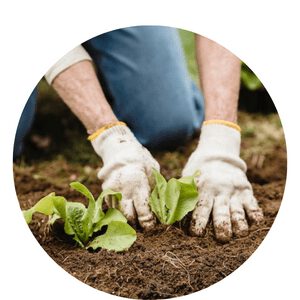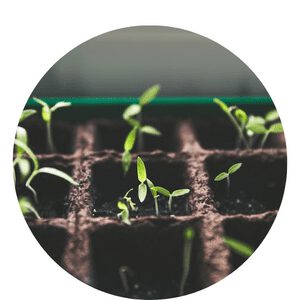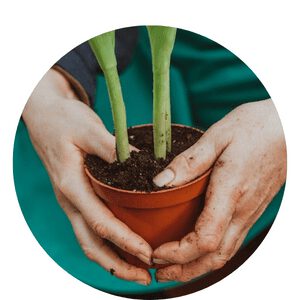Pruning and Training
Organic gardening is an important part of sustainable living, and one of the key components to achieving a thriving garden is regular pruning and training.
Pruning helps to promote healthy growth and can be used to shape plants as desired.
It also helps to improve air circulation within the garden, reduce diseases, and remove dead or dying branches.
Training involves shaping plants in order to allow for better access, manage size, and increase light penetration.

Pruning and Training Menu
Pruning and training in organic gardening
Organic gardening is an increasingly popular hobby and lifestyle choice, with gardeners around the world learning how to grow their own food without using chemical pesticides or fertilizers.
Pruning and training play a key role in successful organic gardening, allowing plants to grow strong and healthy without the use of synthetic chemicals.
In this article, we will explore the basics of pruning and training techniques in organic gardening, providing you with all the information you need to maintain a thriving organic garden.
Pruning is the process of selectively removing parts of plants that are unhealthy or no longer producing fruit or flowers.
Removing dead branches or leaves can help improve air circulation and light penetration throughout your garden, while also improving overall plant health by encouraging new growth from dormant buds on established stems.
The benefits of pruning and training
Pruning and training in organic gardening is a process that helps to ensure the health, strength, and beauty of plants.
Pruning involves the careful removal of dead or damaged parts of plants for aesthetic purposes as well as healthy growth.
Training requires shaping the branches and stems of young plants in order to promote their desired shape when they mature.
Both processes are important for any organic gardener who wishes to cultivate attractive flowers, trees, and shrubs.
Understanding why pruning and training is beneficial to organic gardeners can be difficult at first.
Pruning promotes flowering by eliminating older dead sections where flowers often do not form; it also increases air circulation which keeps diseases from developing in crowded areas.
Training is especially helpful for younger plants since it encourages them to grow into the desired shape quickly before reaching maturity.
Pruning keeps our gardens with perfection, Creating pathways for light and direction. Shine on flowers and foliage, toil and time, Organic gardening's joy is sublime. Train your vines, arch their arms so high, For bountiful fruit come the harvest time. Fulfilling job done in nature's way, This satisfaction lasts 'til the last day!
Chappy The Gardener
Tips for selecting and using pruning tools
Pruning and training are essential components of organic gardening.
To successfully prune and train plants, you need the right tools.
With a few tips and tricks, selecting the appropriate pruning tools can be easy.
First, consider the type of material that needs to be pruned: woody plants require heavy-duty shears or saws while soft materials can often be cut with lighter shears.
Once the right tool is selected, it’s important to maintain it properly; wipe down blades after each use to prevent rusting and dulling, as well as sharpen blades periodically for best results.
Additionally, it’s helpful to have multiple sizes on hand for various tasks – for instance, small shears are ideal for removing dead leaves from stems while large loppers can easily trim thick branches.
Basic principles of pruning and training
Pruning and training techniques are essential for creating and maintaining healthy plants in organic gardens.
Proper pruning can ensure vigorous growth and encourage fruiting, while training allows the gardener to shape their plants as they desire.
By understanding a few basic principles of pruning and training, gardeners can apply these practices with confidence to create beautiful, healthy landscapes.
When it comes to pruning, timing is everything. Plants should be pruned when they are dormant or actively growing, at times when the stress on the plant is minimal.
It’s also important to use proper tools when trimming back branches–clean shears or saws should be used in order to get a clean cut that will promote healing and quick recovery.
To avoid damaging bark or inner tissues, always make sure that you’re cutting just above a node or leaf bud.
Pruning and training techniques for different types of plants
Pruning and training techniques are essential for any type of garden.
Whether you focus on organic gardening or not, pruning and training your plants will ensure healthier and vigorous growth.
Pruning is the process of removing dead or diseased branches, while training involves manipulating the shape of a plant to encourage healthy growth.
When it comes to pruning and training different types of plants, different techniques must be used.
For instance, deciduous shrubs need more frequent pruning than evergreen shrubs as they shed their foliage annually.
Similarly, annuals require regular cutting back while perennials should only be trimmed when necessary.
Training can also vary between plants; some may need support to stay upright while others may require trimming back to discourage spreading too much.
Tips for maintaining healthy plants
Organic gardening is gaining in popularity as more individuals recognize the health benefits of growing and consuming produce grown without chemicals or pesticides.
Pruning and training are two important techniques used by organic gardeners to maintain healthy plants.
Pruning encourages healthy growth, while training helps plants to grow upright and in the desired direction.
Here are a few tips for successful pruning and training of your organic plants.
When pruning, always use a clean pair of sharp scissors or shears that have been sterilized with rubbing alcohol.
Make sure to cut just above a bud so new growth can emerge from the point where you made the prune – this will help promote healthy new growth from your remaining plant material.
Additionally, it’s important not to remove too much material at once, as this can lead to shock or death of the plant if done incorrectly or excessively.
Common challenges and solutions
Organic gardening can be a rewarding and enjoyable activity, but it also comes with its own set of challenges.
Pruning and training are two essential practices in any successful organic garden, yet they can also be the source of much frustration for gardeners who don’t understand them.
In this article we’ll explore the common issues associated with pruning and training as well as potential solutions to help you take control of your garden’s growth.
Pruning is an important task for controlling plant size, promoting flowering and harvesting fruit or vegetables; however, without proper knowledge or execution it can result in poor plant health and slow growth.
Similarly, training plants such as vines requires dedication if you want to ensure they grow into their desired shapes.
In conclusion, the practice of pruning and training in organic gardening is essential to the growth of a healthy garden.
Pruning and training practices help to improve air circulation, encourage fruit production, and ensure that plants are robust and disease-free.
Gardeners should be aware of the different methods available for pruning and training so they can better plan their gardens.
With knowledge of proper pruning techniques, gardeners can enjoy bountiful harvests from their gardens with minimal input from chemical fertilizers or pesticides.
Click To Grow
Helps Us Grow – Share If You Like

















